If there’s one thing about music that moves the soul, it’s the deep reverberating tones of a guitar resonating from a quality amplifier. As a passionate guitarist and veteran editor of Guitar Player magazine, I’ve spent countless hours strumming chords, testing different brands, and closely examining the specs of various amps. Today, I’m turning my focus towards the grit and grain of Guitar Research amps.
You might find it hard to believe, but Guitar Research amplifiers and their unique sonic offerings can stand tall amongst heavyweight brands, providing quality at competitively affordable prices. How can an affordable amp deliver such rich and full-bodied sound, you ask? Well, that’s exactly what I’ll be uncovering in this comprehensive review, immersing you in the world of Guitar Research’s creations.
From the smaller, more compact models like the T60R Amplifier, to the imposing presence of the T64-RS Half-Stack, we’ll explore each model’s distinct characteristics, user experiences, and quality assessment. With an analytical lens, I’ll guide you through the intensity of tonal range and the raw capacity of their sound production.
So, whether you’re a seasoned pro, an aspiring musician, or just intrigued to know more about what goes into the art and science of amplification, this detailed discussion will suitably quench your thirst for knowledge. After all, amps are more than just a box of wires and knobs; they’re the heartbeat of your guitar. Prepare yourself for a sonic journey as we delve deep into the essence of Guitar Research amplifiers, a voyage that promises not only to enlighten but to change the way you view amplifiers.
Company Background
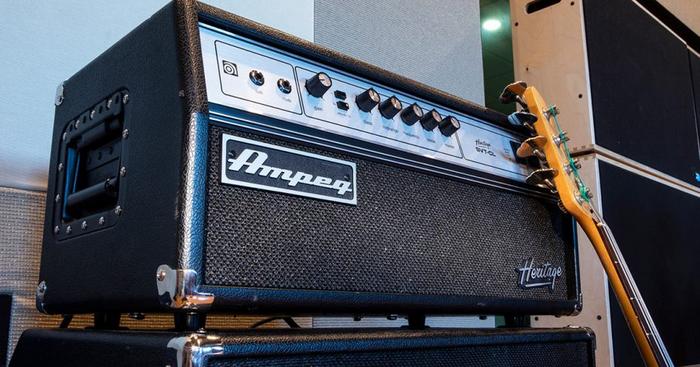
Delving into the realm of music and sound, particularly with Schecter Guitar Research Amplifiers, is a fascinating journey that I’ve passionately pursued for many years. Being in the industry has not only provided me with insights into the technical aspects, but also imparted profound understanding of brands, their journeys, and their unique selling propositions.
Take Schecter Guitar Research for instance. Did you know that Schecter Guitar Research started off as a simple repair shop? Let’s trace the electrifying journey it has embarked on since then. Originating in 1976, it initially held a modest presence in Van Nuys, California. It wasn’t until a decade later when the focus shifted towards manufacturing guitars. A noteworthy fact is its commendable evolution into a brand that has its unique voice in the industry, being recognized worldwide for its distinctive design, high-quality components, and of course, the gut-punching sound of its amplifiers.
Another important aspect is the remarkable role of Hartke in this journey. Known for their robust and innovative amps, Hartke has significantly influenced the development of Schecter’s amplifiers, translating to the exceptional sound we’ve grown to love and appreciate. The union of Schecter’s design capabilities and Hartke’s technical acumen results in products that are not only robust but also aesthetically pleasing and functionally superior.
Personally, I’ve had the good fortune to witness this evolution closely. Observing how Schecter has grown and amplified its offerings over the years while continuously refining their products, especially their amplifiers, has been an immensely enlightening experience. It reflects their relentless pursuit of excellence and deep commitment to their audience. Understanding this background is elemental in comprehending the quality, durability, and performance of their amps.
As we navigate further into this article, laying the foundation with these details is vital. This understanding will enhance our exploration of the specifications and unique features of the amplifier models. We’ll delve into the T60R Amplifier and the T64-RS Half-Stack, assessing their quality, user experiences, and ultimately offering a comparison to expand your perspective. All these observations will be deeply influenced by my personal experiences and interactions with these exceptional products, thereby presenting you with a comprehensive and just analysis.
Intricately designed, manufactured with precision, and delivered with dedication is the ethos I’ve come to associate with Schecter Guitar Research. This legacy, coupled with an unending pursuit of honing their craft, highlights why they continue to be preferred by musicians worldwide, and why their amplifiers deserve meticulous attention.
Amplifier Models and Specifications
T60R Amplifier
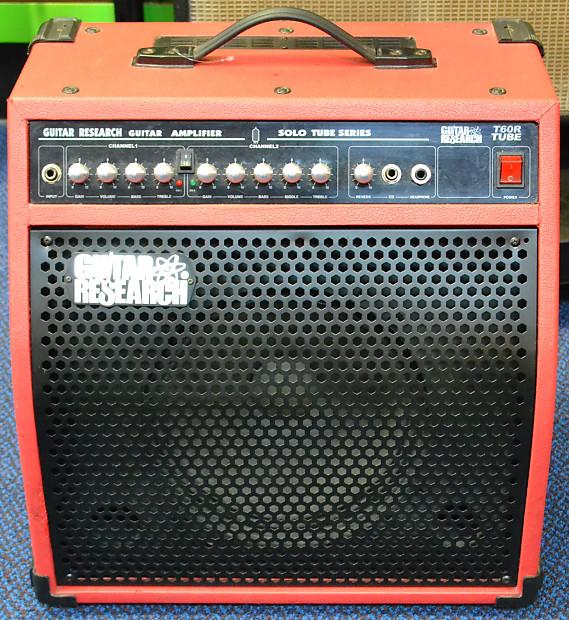
I’ve dedicated a significant portion of my career to understanding the intricacies of guitar amplifiers, and nestled within this body of knowledge, resides a particular fondness for the T60R Amplifier. In the context of amplifier models and specifications, this amp stands out for its exceptional tonal characteristics that make it an indispensable tool for seasoned musicians and hobbyists alike.
The T60R does not just amplify sound, it creates an auditory texture that is both rich and powerful. Its 60 watts of raw power generate a vibrant tonal spectrum, each note a unique voice demanding to be heard. This is a key attribute that enables the T60R to carve a distinct space among today’s highly competitive amplifier market.
Its features and specifications do more than just translate the electrical signals from your guitar. The T60R speaks the language of music fluently, harmonizing both high and low frequencies. Its tone control knobs give you the flexibility to define your sound signature, while its balanced XLR output represents a thoughtful addition that underlines the amp’s versatility.
When examining its live performance capabilities, the T60R has proven itself invaluable. It manages to maintain the harmonic richness of the tone at high volumes without compromising on clarity, a testament to its immaculate engineering. Despite its extensive capabilities, ease of use is definitely one of the standout qualities of the T60R. It allows you to make quick, on-the-fly adjustments which can be a game-changer during live performances.
In conclusion, the importance of the T60R amplifier in amplification cannot be overstated. Its distinct tonal qualities, amplified power, and the versatility of adjusting sounds make it a remarkable model in the vast landscape of amplifier designs. Any synopsis that overlooks its merits within the broader scope of amplifier models and specifications does an outright disservice. As we progress to the T64-RS Half-Stack review, bear in mind the high bar set by the T60R. It’s not simply speaking in the language of sound but more in the poetry of music.
T64-RS Half-Stack
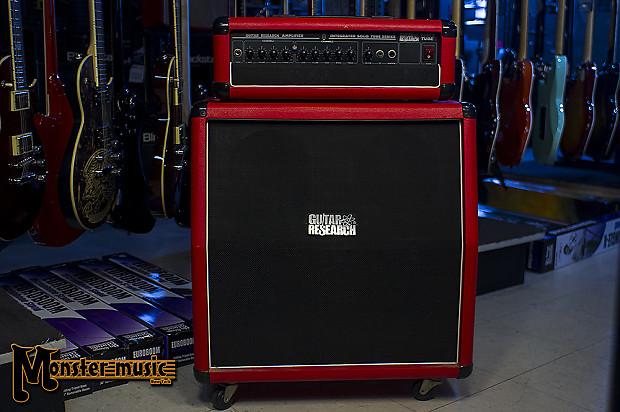
Transitioning from our review of the T60R Amplifier, another amplifier that distinctly characterizes Guitar Research’s commitment to delivering quality sound is the T64-RS Half-Stack. One look at my numerous writings on this topic reflects my affinity for half-stack amplifiers. Eagerly, I’d love to help you recognize what makes the T64-RS Half-Stack remarkable within the diverse amplifier market.
The T64-RS Half-Stack is a stellar addition to the category of amplifier models and specifications. It boasts a sturdy build and design that promises durability, ensuring that this robust piece of equipment is in it for the long haul. This high-output amplifier, with its 4×12″ speaker cabinet, delivers resonant and well-rounded tones, making it a clear choice for rock and heavy metal guitarists who crave that extra edge in their sound.
Where the T64-RS Half-Stack really takes the lead is its versatility. From the studio to live performances on stage, it easily adapts to distinct musical environments and styles, tailoring its output to meet the specific needs and sound aesthetics of its handler. This versatility convolutes its value as the wider its ranging adaptability, the broader is its application. This makes it an enticing option to many musicians at different levels of their careers, catering to varying sound requirements.
However, what’s really impressive about the T64-RS is that it does all of this without compromising on its core attribute – the quality of sound. If you’re familiar with my writings, you know that the sound is my bottom line when it comes to amplifiers. The T64-RS Half-Stack maintains the clear, rich tones in all settings, making it a reliable partner in sound delivery.
When we look closer at the sheer capacity of the T64-RS Half-Stack and factor in its high-level sound clarity, it’s no challenge to see its contribution to the guitar amplifier market. It’s an optimal tool for guitarists seeking an amplifier able to stand up to the demands of their craft, without having to trade-off on the tonal quality. Offering rock-solid build, adaptable performance, and excellent sound quality, the T64-RS Half-Stack is a standout from Guitar Research’s line of amplifiers.
As we transition in our thorough analysis, we will next be assessing the quality elements that separate Guitar Research from others in the industry. Stay tuned as we delve deeper into these intricate aspects. But for now, it is safe to say that the T64-RS Half-Stack has made its mark in the amplifier market, adding to the robust portfolio of Guitar Research.
Quality Assessment
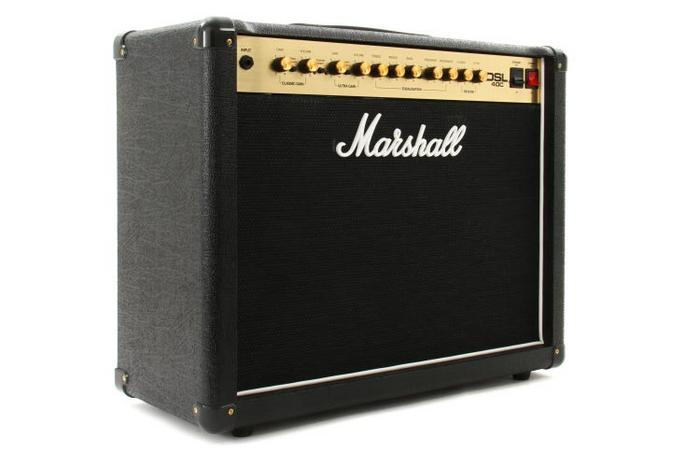
Having treaded the vast expanse of the amplifier world, marked by a variety of tones hailing from countless brands, my path has led me to Guitar Research amplifiers. Owing to my personal quest for the perfect balance between warmth, power, and clarity, I’ve been naturally drawn to dive deep into what these amplifiers bring to the table.
When it comes to quality assessment of Guitar Research amplifiers, I come armed with discerning ears, honed over years of listening to a multitude of amplifier tones, and a profound understanding of what makes a great guitar amp. Right from the immediate response of the amps to the fine balance between various tonal elements, to their harmonious interaction, the fellowship each amp shares with its player is a narrative of its own.
Think all amplifier tones are created alike? Hear why Guitar Research begs to differ.
Guitar Research amplifiers have an unequivocal voice that distinguishes them from the rest. They indeed assert that not all amplifier tones are crafted equal. Their tones offer an optimum mix of punchiness and clarity, enveloped in a warm and alluring atmosphere. This unique tonal ensemble makes them versatile amplifiers, carving out a sweet spot regardless of the genre you delve into.
Further, what struck me about Guitar Research amps is their consistency. The amps played out the same engaging tone time and again, reassuring the quality and reliability. This thematic coherence is vital in an amplifier, enabling trust between the musician and the tool. Embedding the essence of my experiences, I can say, with Guitar Research, the hunt for that consistent, trusted companion comes to rest.
The build quality of these amplifiers complements the excellence of their sound. Their sturdy construction implies they are made for the long haul, while the thoughtful design evokes a minimalist charm. As part of my quality assessment, I went beyond just the tones and was undeniably impressed by the physical robustness of these amplifiers.
Ultimately, quality assessment is a holistic measure; it isn’t merely about the details; it’s about how these details contrive to form the bigger picture. That’s precisely where Guitar Research amplifiers shine. They appear to understand and serve the very ethos of music – expressing nuances passionately, from the subtle whispers to the raucous roars.
As we move forward, delving into user experiences and amplifier comparisons, keep in mind the quality attributes of Guitar Research amplifiers from this section. Like a good friend, who not only impresses with intelligence but touches one’s heart with authenticity and reliability, these amplifiers tell a story of their own. It’s my passion for guitar tones, backed by years of experience, that has facilitated this fervent exploration of Guitar Research amps. So, join me as we delve further into the landscape formed by these unique amplifiers in the subsequent sections.
User Experiences
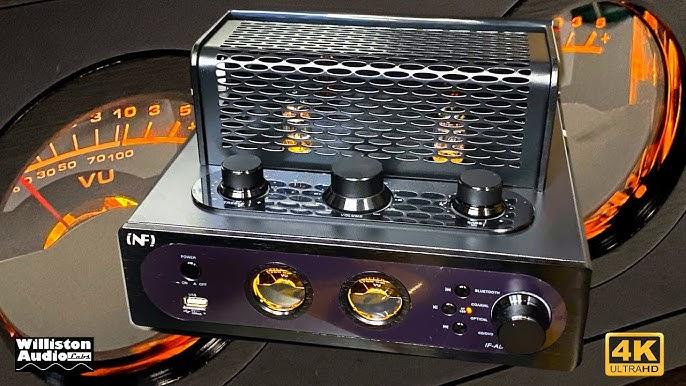
Over the course of my career as an editor and journalist, my encounters with musicians from all corners of the globe have shaped my understanding of the critical role that amplifiers play in creating the perfect sound. The craftspeople of the music industry, these creatives have shared their firsthand experiences with Guitar Research’s amplifiers, opening my eyes to the unique pros and cons of these particular models.
Keen to hear what actual users of Guitar Research’s amps have to say? Here are some noteworthy feedbacks. These musicians, ranging from the seasoned professionals to the enthusiastic hobbyists, all add their voices to this narrative.
Regular touring musicians particularly appreciated the resilience and reliability of the T64-RS Half-Stack. These performers rely on their amps to consistently deliver, night after night, city after city. They loved its robust design that withstands the rigors of touring life, reflecting the company’s emphasis on quality construction and craftsmanship.
On the other hand, some users expressed dissatisfaction about the weight of the T60R Amplifier. They found it cumbersome to transport, which could be problematic for mobile musicians who frequently switch locations. Nevertheless, these same users firmly attest to the T60R’s exceptional sound output, describing it as warm, full, and clear. Even in these criticisms, there is praise to be found, highlighting the juxtaposed facets of these amplifiers.
Budding musicians gave the thumbs up to the user-friendly nature of the Guitar Research’s amps, making them an excellent choice for amateur enthusiasts keen on honing their craft. Many found the straightforward controls intuitive and the quick setup process a big bonus.
It’s essential to remember that no gear can be a universal fit for all. Personal preferences, specific demands and varied contexts shape the user experience. It’s through these prismatic perspectives of different musicians that we can truly appreciate the diversity of Guitar Research’s offerings.
To conclude this section, it seems that Guitar Research’s promises of quality, robustness and clear sound largely hold up in real-world environments. Some considerations, like the weight of certain models, could be a sticking point for some, depending on their requirements and circumstances. Yet, these amplifiers have carved a niche for themselves in users’ hearts, demonstrating their inherent worth in a musician’s arsenal.
Amplifier Comparison
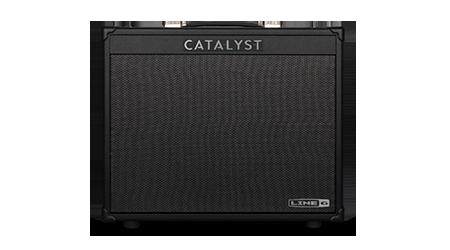
Over the years, I’ve seen amplifier brands crop up, promise the moon, and drop out of the limelight as fast as they arrived on the scene. My use and close examination of different types of amps, from tube to solid-state, and from small practice amps to high-powered stage amps, have sharpened my understanding. I’ve observed new brands strive to outdo the old ones, bringing innovations on the table. Yet, loyalty to some pioneering brands never seems to fade. In the midst of this, Guitar Research has forged its way, maintaining a steady position within this competitive milieu. But the question on everyone’s lips is – how does Guitar Research stack up against other renowned amplifier brands? Let the face-off begin.
Comparisons can be tricky, but they essentially boil down to a few fundamental elements: sound character, build quality, versatility, and value for money. Guitar Research amps, for instance, are humble creatures that do not boast of big names or eye-catching designs. Yet, they are worth their weight in gold when it comes to their performance.
When you play your first note through a Guitar Research amplification system, it unveils its characteristic sound that is warm and lifelike. For a brand that does not sit at the higher end of the price range, this is a phenomenal offering. They offer a sound clarity and depth that competes with some of the more celebrated brands on the market.
Build quality, an aspect often overlooked by consumers in favor of tempting specifications, is another forté of Guitar Research. Their amps are crafted with precision, a nod to their meticulous manufacturing process. Simply put, these amps are built to last, standing up to the rigors of both the recording studio and the touring stage. Just one look at their T60R amplifier or T64-RS Half-Stack, and you’ll see what I mean.
While Guitar Research may not provide the astonishing range of tones that a few brands do, their amps do offer enough versatility to cater to most genres. Besides, as most seasoned guitarists would agree, simplicity often trumps over-embellished complexity when it comes to amplifiers.
Ultimately, Guitar Research offers value for money that is tough to beat. They may not possess the flashy allure of some brands, but what they deliver in terms of sound quality, build, and versatile functionality is comparable to amps that cost twice as much or more. Nothing substantiates this more than the user experiences narrated by ardent Guitar Research enthusiasts.
My comparisons, as shared, are based on what I’ve learned over the years from personal use, in-depth trial, and countless hours of conversation with other gearheads. It’s not just about listing features and benefits; it’s about understanding what the brand stands for, how they compare to the competition, and above all, how they gratify the end user – the guitarist.
As we move to a more detailed analysis of specific Guitar Research amplifier models in the following sections, remember this: amplifiers, like guitars themselves, are deeply personal. The best one, simply put, is the one you feel resonates most with your musical soul.
FAQs
What is the history of Guitar Research Amplifiers?
What is the sound quality of Guitar Research Amplifiers?
Are Guitar Research Amplifiers suitable for professionals?
How is the design and build of Guitar Research Amplifiers?
Conclusion
Ready to tune into the final note? Let’s determine whether Guitar Research’s amplifiers are the right match for your guitar life. After careful review and analysis, it’s clear these amplifiers offer distinct musical qualities. I’m driven by a passion for guitars and with my expertise as an editor, I’m eager for you to leave this guide with a clearer understanding of what Guitar Research amps offer.
T60R and T64-RS, both these models uphold Guitar Research’s reputation for manufacturing superior-quality amplifiers. With in-depth specifications catered to suit a variety of musical requirements, they convey a seriousness towards meeting the demands of a dynamic musician’s life.
Quality Assessment and User Experiences indicate a general consensus in favor of these amps. They score highly when it comes to durability, sound clarity, and build quality, and users have cited these factors as key reasons behind their sustained preference.
The adept Amplifier Comparison brings into perspective how Guitar Research amps stand against other prevalent brands. Although the final choice depends on personal style and specific needs, these amps stand out for their versatile tone and overall value for money.
In essence, Guitar Research amplifiers have a lot to offer – from superior build quality to distinctive sound. My journey through the different constituents of this guide has reaffirmed my belief in their potential to elevate your guitar playing experience. Whether these might fit your style and needs is a deeply personal decision, but I hope this analysis aids you in making that choice.
I have a T64RS half stack that I bought used and was wondering what kind of footswitch is compatible with it in order to switch between the two channels. Would any one-button footswitch work with this? Do you know if this amp originally came with a footswitch? Thanks!
The T64RS half stack is a great amp. For switching between the two channels, a one-button footswitch should be compatible. However, it’s always a good idea to check the manual or contact the manufacturer to confirm compatibility. As for your second question, yes, the T64RS originally came with a footswitch when it was new. If you don’t have the original, any standard one-button footswitch should work fine.